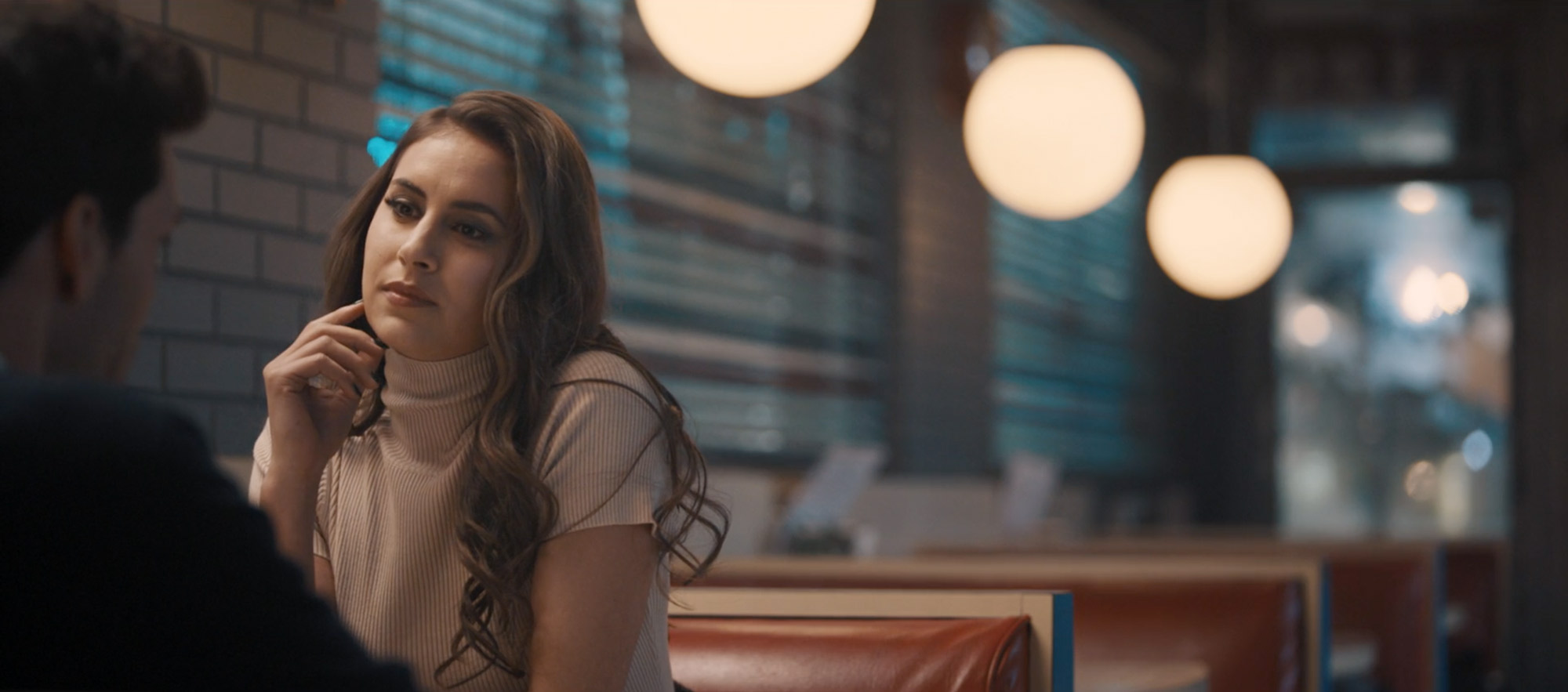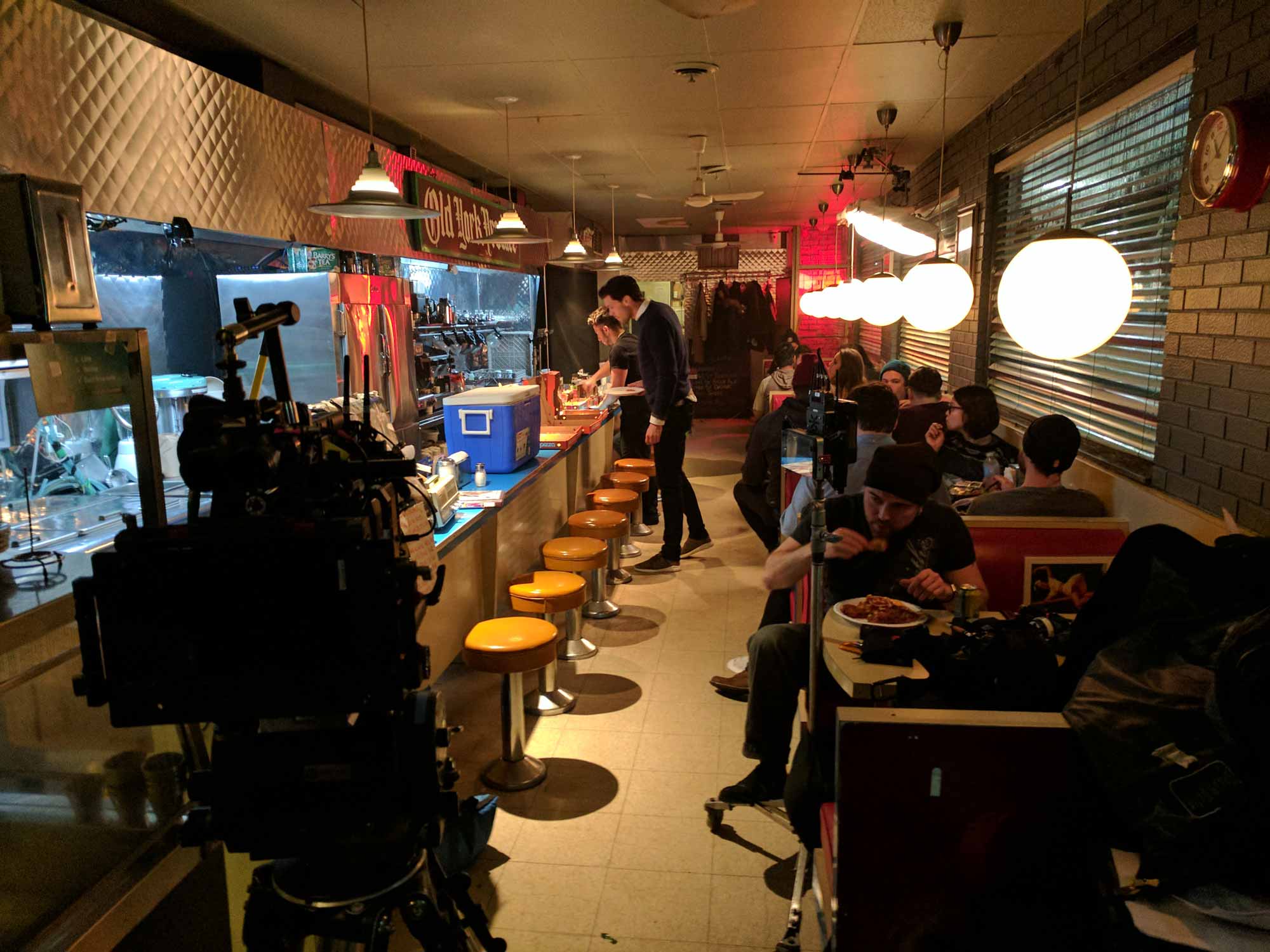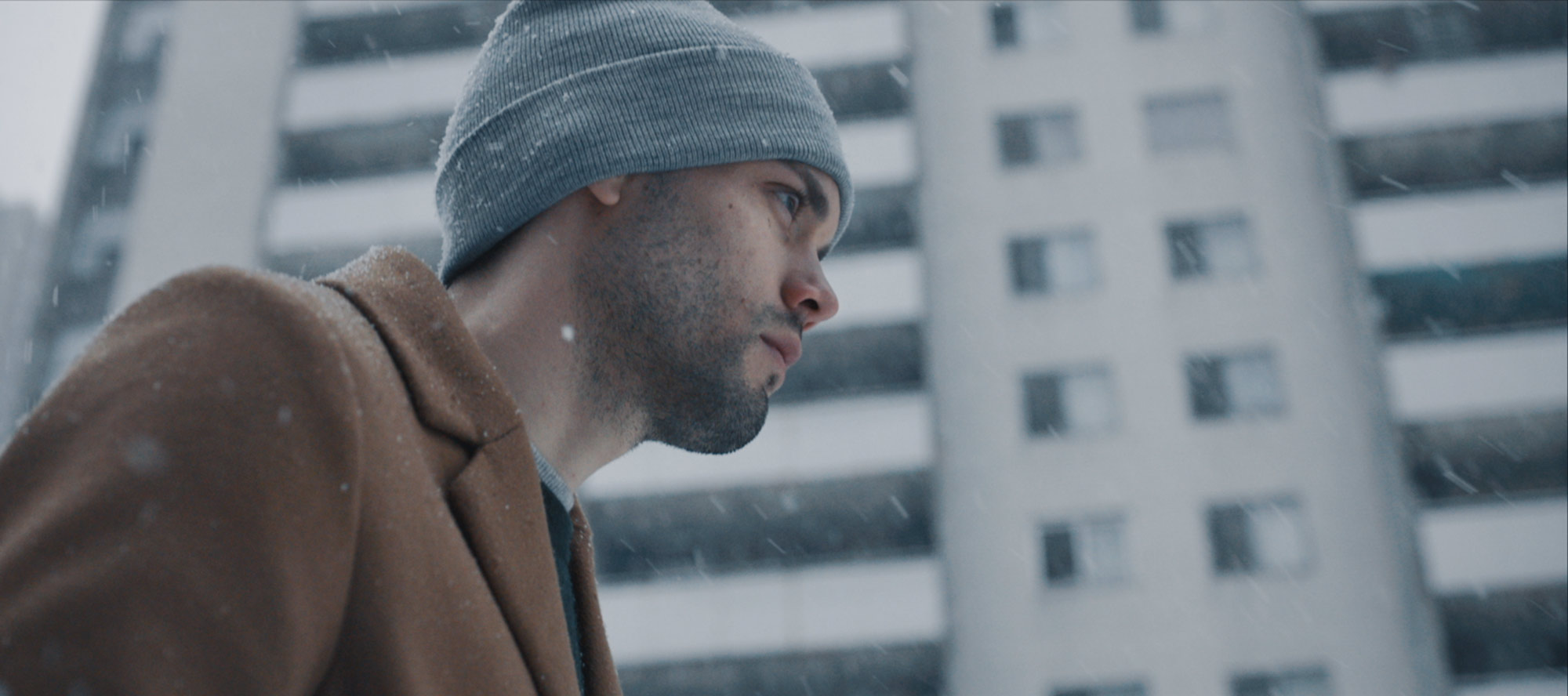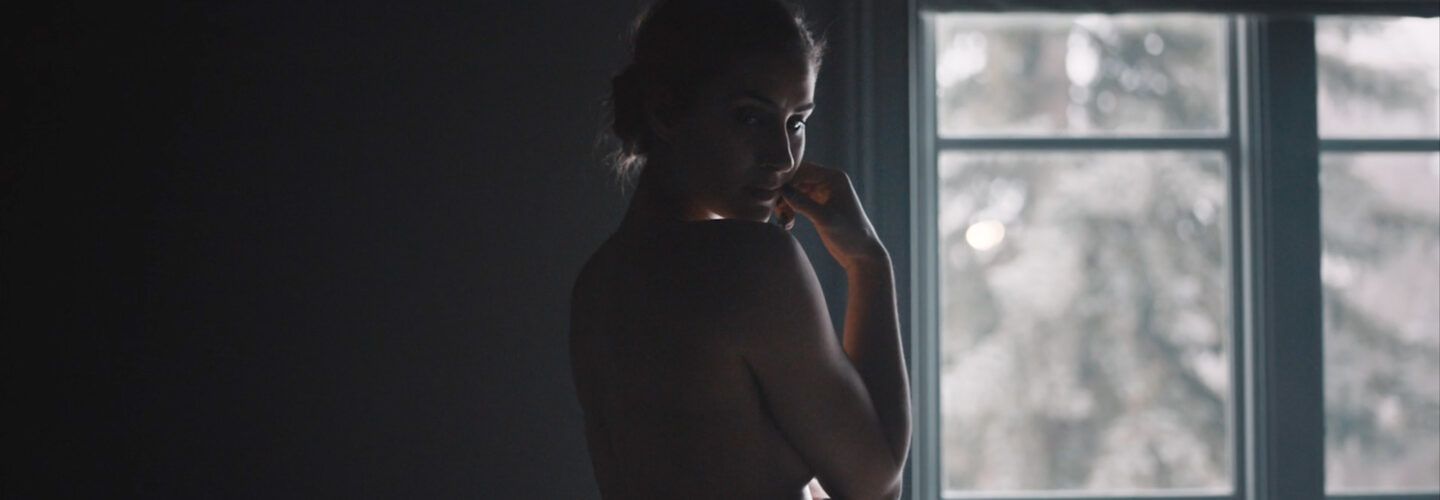
When Andrew De Zen was invited to make a move into the realm of fashion for Yo & Co’s new luxury basics range, the Canadian director was keen to incorporate narrative sensibilities into the conventional look book structure. The result is Changing Direction, a diner-based meeting between two lovers which spirals out into a whirlwind relationship montage in which the clothes, are of course, on prominent display. Andrew describes how he successfully straddled the needs of his client and his storytelling desires, and how a potentially shoot disrupting heavy snowfall added unexpected production value.
What was the creative brief that you went into Changing Direction with?
I wanted to approach this fashion film with a bit more of a narrative tone. Luckily I was given a huge amount of creative freedom from the get go to essentially take the video wherever I wanted to go with it which is a great thing to have from a client. Early on it felt like tackling a short film and I wanted to keep that vibe moving forward. To try and tip the expectations of what a traditional ‘Look Book’ is on its head and to go with a different feel. Mixing the reality of an actual scene to draw an audience in and then to embrace the fashion film side of it all. Then the full energy hits further along. It was really about trying to do something a little fresh and set up a bit of intrigue for the brand. That and shooting some sort of cinematic diner scene is kind of a must at one point for a filmmaker.
How were the fundamentals of the clothing combinations and their appearance on screen determined?
For the choice of clothing and wardrobe, myself and my wardrobe stylist Kayla decided which colours and clothing would best compliment certain locations and colours we were shooting. Again we had complete control in the sense of we could shoot whatever we liked whenever we chose to. For our exterior snow shots, we layered some clothing on our lead for practical reasons that would also best suit the colours and snowy exteriors.

Was there a need to alter your directorial approach with the actors given their fashion backgrounds?
I cast two local Toronto models, Tom Exton and Chrissy Briel, who were absolutely fantastic. They were both new to acting in this sort of way, but as with most models, they have a natural comfort with the camera. In casting, with any project, I like to follow up with my main selected cast to meet informally over coffee and to just chat. This way you get to feel each other out and see if it really is a good fit for the project. I actually hate a normal casting process. It’s too artificial and too rigid for me personally. I don’t think any actor can really deliver their best in a cold read. But on the day it was essentially just removing a lot of the modelesque looks and that sort of photoshoot ‘swagger’ that they were both able to do so well.
How did you realise your ambitions for the film during production?
My DP is my closest collaborator and dear friend Kris Bonnell who shot We Aren’t Strangers and we’ve established a rock solid way of communicating together. We shot on the Arri Mini with Leica Summilux lenses for a decidedly cleaner look. As well as utilizing Steadicam for certain moments to elevate production values. This particular project, however, was met with a pretty dramatic dose of Murphy’s law.



Early on it felt like tackling a short film and I wanted to keep that vibe moving forward.
We shot for two days, a weekend shoot, and our first day was supposed to be a two hour drive north to shoot in a beautiful lake house location. Low and behold, the day before as we’re driving making certain equipment pick ups, we get hit with one of the worst snowfalls of the winter here in Toronto. And to note, when we had scouted this lake house, my car actually ended up getting stuck in a snow back for two hours so there was already a good amount of fear instilled without there being a dramatic snowfall. So the day before we lost our main interior location, and on Day 2 it decided to blizzard yet again when we had our exterior shots in the city. But that ended up paying off really well on camera as the snow looked beautiful and kind of makes the exterior tracking shots of Tom. So hey, natural production value.

There’s a great energy in Jamie N Commons’ Rumble And Sway which plays really well with images. What lead to that track selection?
Yeah, the track was something I had selected in pre-pro. We had a lot of time to creatively prep the film so finding the right tone was my main priority. I knew I wanted something that could play with the classic/vintage aesthetic of the diner but propel the film forward with a fast upbeat momentum once we got into our more traditional ‘Look Book’ side of the film. My Sound Designer, Eugenio Battaglia, did a great job as always and he understood immediately what I wanted to do with the intro and when we revisit the diner for a quick beat at the end. I wanted to draw people in so we set up the feeling of the music coming from a real world source.
As always, I’m curious as to what projects you have planned for the future?
Right now I’m beginning to prep my next short film Stories We Tell Ourselves, the third part in my visual series Of Walls & Mountains, along with writing a short drama titled Gone Days which is a very personal story. Along with those I’m flying to Iceland with my DP Kris Bonnell and we’re trying something a little crazy for a passion project, then just some commercial content.


